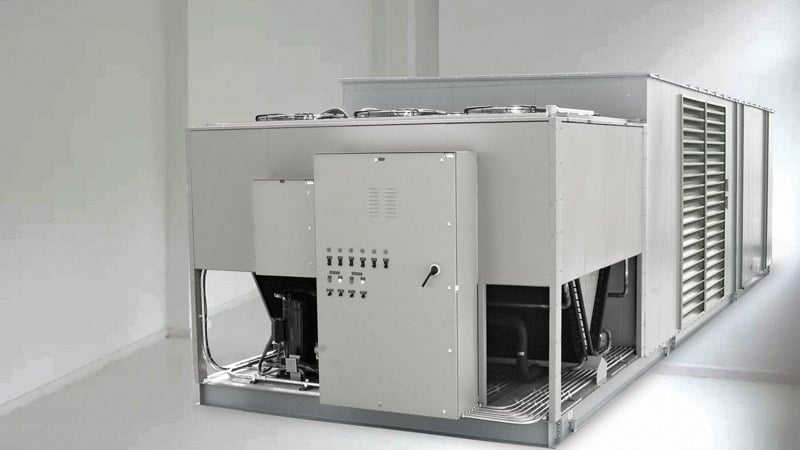Disclaimer: This article delves into the concept of heat reuse, its applications, and the relevant regulatory and legislative initiatives. It draws on experiences and policies from EMEA countries, including the EU, and is intended as a best practice guide for understanding heat reuse within this region. It's important to note that local and regional policies and guidelines must be considered and adhered to for areas outside the EU. For more information, please download the white paper at the end of the article.
In today's AI-driven world, data centers and high-performance computing play a crucial role in powering the technological revolution. With a clear focus on solutions that meet current demands while also accommodating future growth, data center operators prioritize infrastructure that emphasizes adaptability, energy efficiency, and reliability.
The journey toward more responsible growth demands a holistic view. It's not just about efficiency, it encompasses resource management, alternative energy, waste reduction, and embraces a circular economy. As data centers evolve, holistic design means more than technical specs—it involves smart decision-making and collaboration to navigate AI-driven transformations.
This is also applicable to heat reuse, one of the paths that could help lead to a more energy-efficient future. Data centers require cooling all year round, as nearly 100% of the electricity consumed by the constantly running servers, networking gear, and storage devices is dissipated into heat. Since more and more heat is being generated, there is an ongoing search for heat reuse as an alternative to releasing it into the environment.
The topics addressed in this article were assessed at length by EUDCA and Vertiv in a new heat recovery white paper. It aims to provide an overview of what heat reuse is, how and when it can be used, and what the current regulatory and legislative initiatives that support or mandate it are.
What is Heat Reuse?
Heat reuse (or heat recovery) centers around capturing and reusing the excess heat generated by data center IT equipment and cooling systems.
The IT equipment generates heat, which the cooling systems capture to reject outside, maintaining a constant temperature for the equipment. Instead of letting this extra heat go to waste, heat reuse systems capture it and use it for other useful purposes.
A well-designed heat reuse system contributes to efficiency and environmental responsibility efforts by reducing the overall energy consumption and related greenhouse gas emissions associated with traditional heating and cooling methods.
Heat Reuse main purposes and applications
- Space Heating: distributing heating to nearby buildings (homes, offices, etc.) during colder months, mainly for comfort applications. This allows reducing the need for traditional heating systems, thus saving energy and reducing operating costs for data center operators but also for the end user.
- Industrial Processes: preheating water for industries that require hot water for their production processes. Operations, such as cleaning and sterilization, require high-temperature water.
- Domestic Water Heating: preheating water for domestic use, such as showers and sinks in the data center itself or nearby buildings.
- Electricity Generation: In some cases, Organic Rankine Cycles (ORC) can be adapted to produce electrical energy using heat rejection from data centers when it is available at high temperatures (>80°C).
- Cooling: Absorption chillers can provide cooling for the data center itself or for nearby buildings. These types of cooling units use heat to drive the absorption process and provide cooling through the evaporation of the refrigerant used.
- Agricultural Applications: In agricultural or horticultural settings, heat can be reused to maintain greenhouse temperatures or even to grow algae that can absorb CO2 from the atmosphere.
- Farming: Dairy farming needs hot water for cleaning and warm drinking water to increase milk production.
- Other uses: swimming pools, field heating, seawater desalination, wood drying, fish farms.
Heat Reuse systems – Conditions for success
Heat reuse is a complex subject that needs assistance in the evaluation of when, where, and how to deploy it. Additionally, there is no one single way to implement a heat reuse system and it strongly depends on the application and on the purpose of heat use. Below are some examples of possible scenarios and their solutions.
Heat Reuse and Demand Matching
One of the biggest challenges is the balance between the heat demand of buildings/applications in the data center surroundings and the actual heat waste during winter or summer.
During summer, data centers produce a larger amount of surplus heat. This heat is rejected by air-cooled units at a higher temperature and, depending on the heat reuse demand, which varies based on the application, the heat rejected may be more than the quantity needed.
During winter, free-cooling systems are mostly activated to save energy while cooling the IT equipment, but the heat generated by the data center is often insufficient and too low in temperature for reuse. In these cases, to cover a peak heat demand, a heat pump is needed to boost the heat quantity and temperature.
Distance and Infrastructure
The most convenient situation for heat reuse is having nearby buildings/applications that can use it, as installing district heating networks can be expensive . In fact, longer pipes between the data center and buildings mean higher heat recovery temperatures and costs. Another factor that may influence the cost of reusing heat is the possible need to overcome architectural limits as in the case of old buildings, which may require higher heat recovery temperatures.
Costs
The initial investment for heat reuse should be weighed against ongoing costs to see if the energy used for heat recovery offsets the savings achieved through heat recovery. Sometimes heat waste can be sold to specific users to generate revenue and speed up the return on investment . The size of the data center and the heat reuse system affect costs and break-even point calculation. High-temperature applications might turn out to be less attractive due to increased electricity costs, so focusing on low temperature options might be safer for a project to be successful. Of course, this evaluation needs to be made case by case, as the break-even point moves based on the data center size and amount of heat available.
Regulatory and environmental scenarios
In European countries, the energy policy debate has focused on moving away from the use of fossil-fuel-based energy sources, and towards renewable and alternative energy sources such as wind, solar, and hydrogen. Recently, the EU has begun looking into waste heat reuse to be added to the mix of alternative energy resources.
Under the revised Energy Efficiency Directive (EED), if a data center has a total rated energy input of 1MW or higher, it will be required to utilize its waste heat unless economically or technically unfeasible. The requirement will become applicable once the member states transpose it into national law.
However, the examination is not required if the data center waste heat will be directly connected to a district heating network or other networks in the surrounding area, as the Renewable Energy Directive and the Energy Performance of Buildings Directive aim to incentivize.
The power of service and heat reuse integration
Service and maintenance play a critical role in enabling the uninterrupted operation of data centers and the effective utilization of heat reuse applications. In fact, not only do interruptions in data center activities impact operations, they also disrupt the generation of heat, thereby affecting its potential for reuse. This is amplified in high-density and liquid cooling setups.
Service, facilitated by skilled engineers continuously trained in the latest technologies, offers invaluable capabilities of data collection and insight. These insights can be translated into actionable information for optimizing both data center cooling and heat reuse applications. Furthermore, service enhances the potential for heat reuse through retrofit opportunities.
Additionally, service providers can customize and commission thermal unit software to strike the optimal balance between data center cooling efficiency and heat reuse.
Vertiv monitoring and control logics
Meticulous attention to detail and the use of reliable components, managed through control logics, are pivotal for maximizing data center efficiency and reliability.
Robust control logic enables operators to optimize cooling infrastructure performance, allowing continuity crucial for operational integrity.
Vertiv™ Liebert® iCOM™Controls are crucial for overseeing various data center systems, particularly in cooling operations.
By regulating temperature, humidity, and airflow in real-time, Vertiv’s monitoring and control logics reduce downtime and equipment failures. Additionally, they facilitate condition-based maintenance, by providing real-time insights, enabling automated adjustments and condition-based maintenance strategies.
More information about heat reuse can be found in the newly released white paper and press release available on EUDCA’s website.





